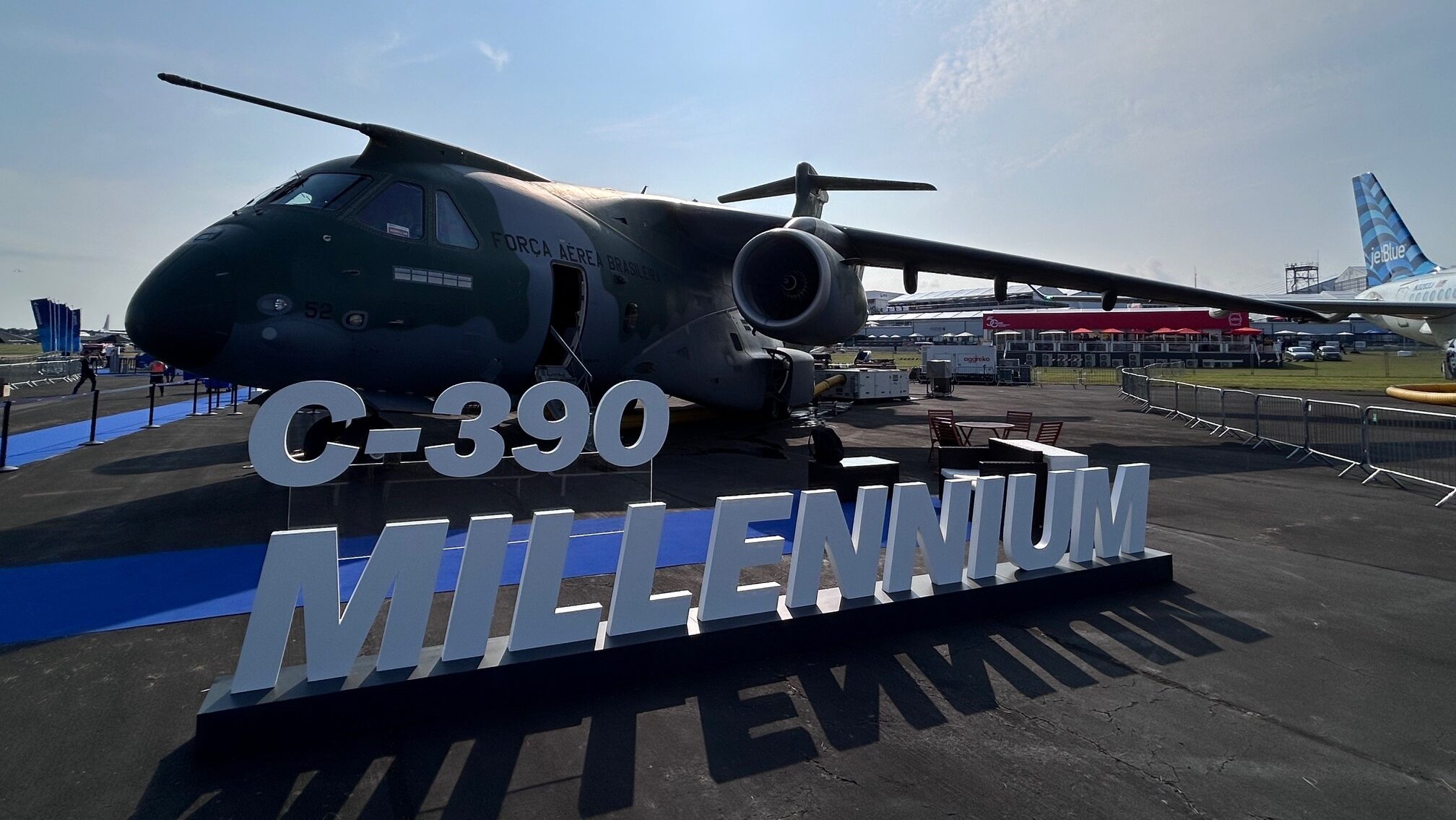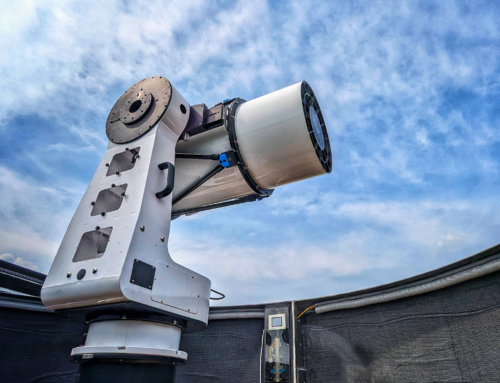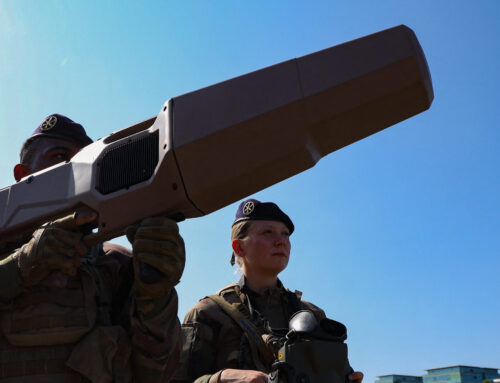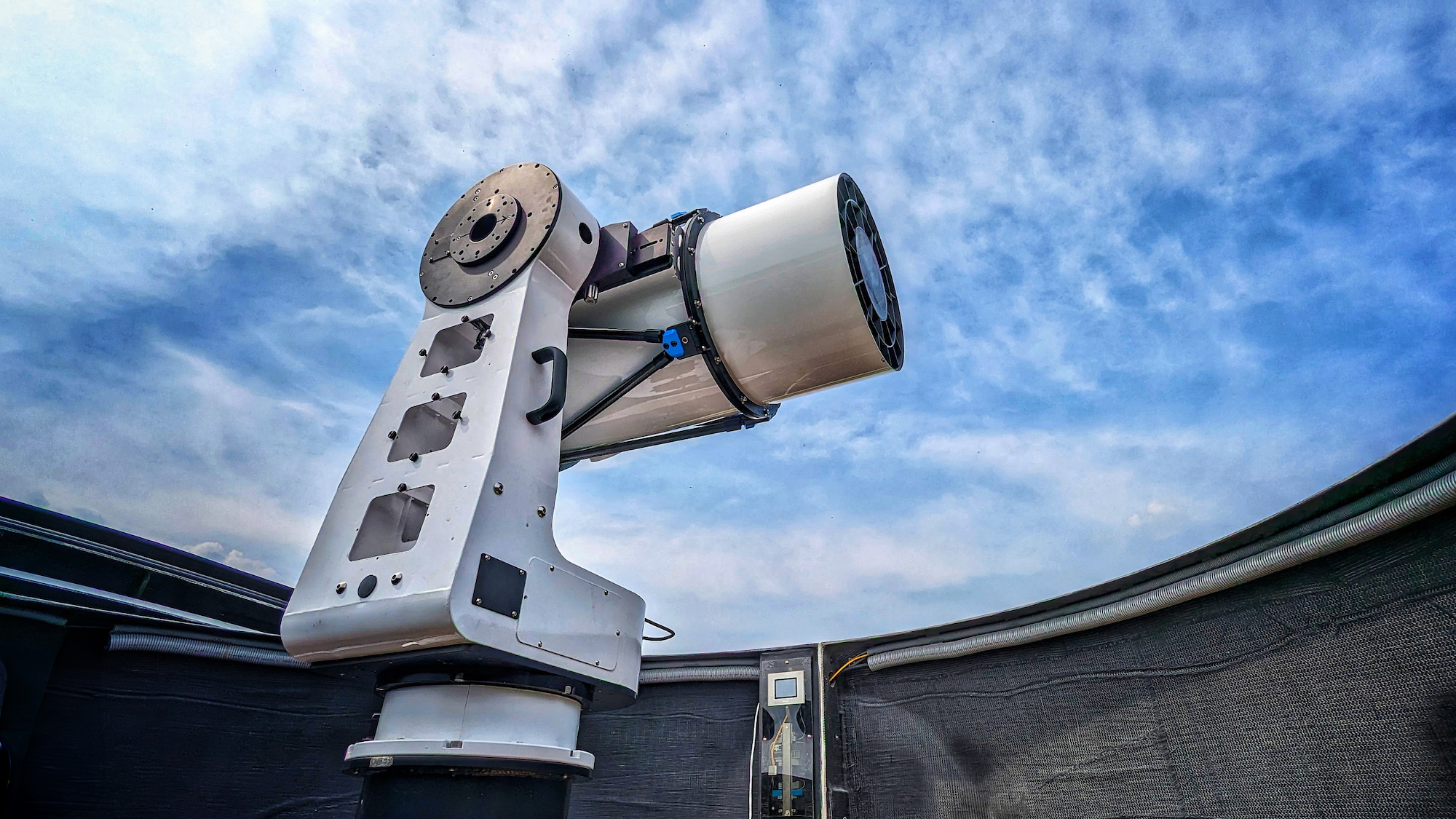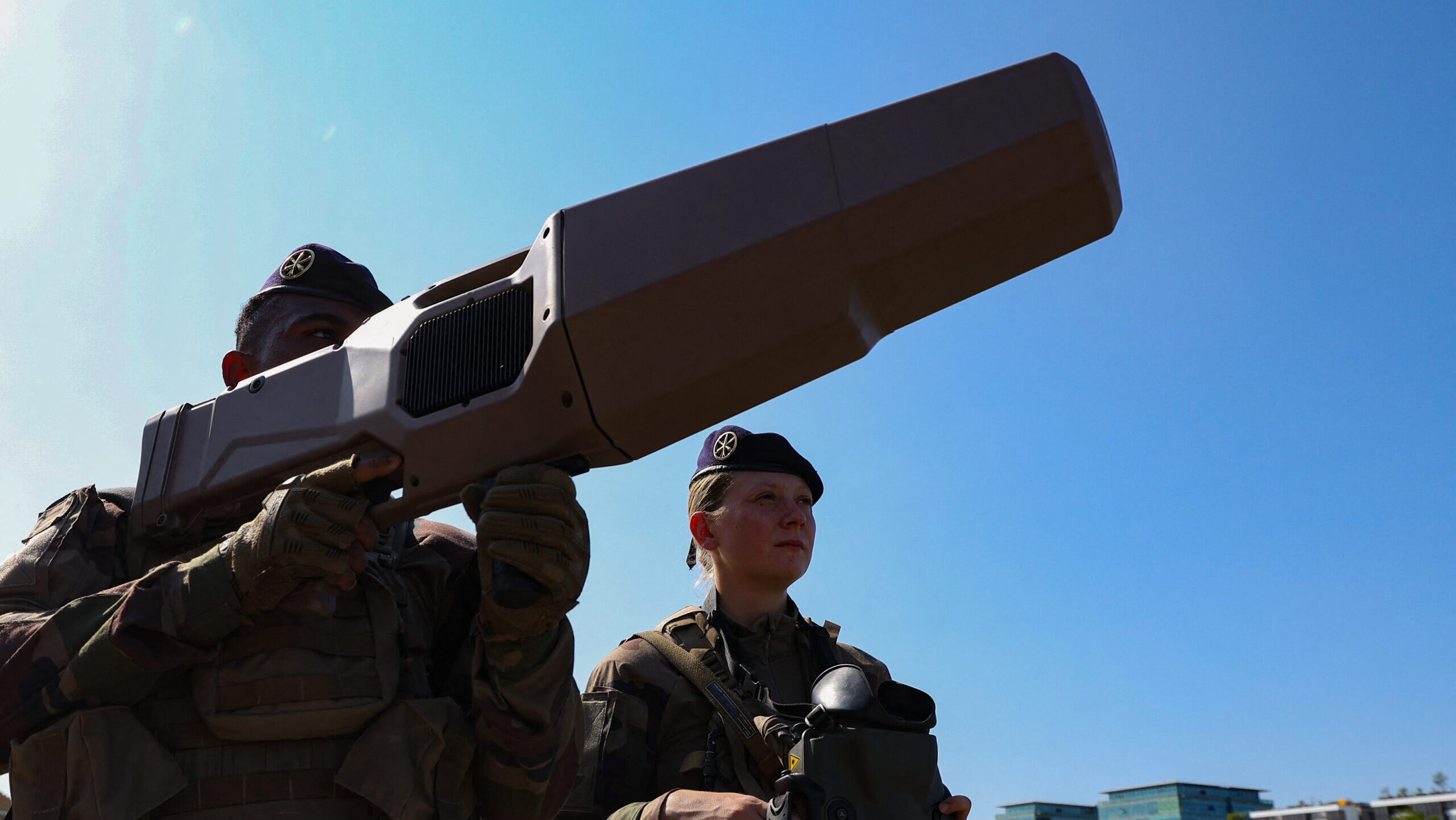Embraer showed off its C-390 Millennium carrier during the 2024 Farnborough Airshow. Embraer signed a contract with the Netherlands and Austria for a combined order of the C-390 during the show. (Tim Martin/Breaking Defense)
WASHINGTON — Brazilian aerospace firm Embraer has been present in the American defense market for over a decade, with its commercial arm operating in the states even longer. But the company is now seeking to expand its US reach by chasing the coveted status of being a major prime contractor for the Pentagon — and to do so, “all avenues” are at the firm’s disposal, including merger and acquisitions activity, executives recently told Breaking Defense.
The core of Embraer’s plans for penetrating the US market, according to Embraer Defense CEO Bosco da Costa Jr, are its two flagship products: the A-29 Super Tucano prop plane, and especially the firm’s C-390 tactical airlifter.
“The main interest of Embraer Defense & Security is to expand its presence here in the US using this platform,” da Costa said of the C-390, known as the “Millennium,” in an October interview.
The C-390 has enjoyed a string of recent successes on the international circuit, sometimes besting competitors like Lockheed Martin’s C-130, as da Costa noted that Embraer recently “defined a strategy to turn Embraer Defense & Security into an international player.” On the US side, da Costa emphasized that the Millennium is already compliant with Buy American Act requirements, pointing to customers like the Air Force or Marine Corps that the company would pitch the aircraft to.
Embraer could even put forward the C-390 for any Pentagon buyers as a prime supplier. And it may have to, now that a partnership with L3Harris has fallen through for an “agile tanker” aimed at the US Air Force, whose own air refueling plans are somewhat in flux.
According to Embraer Defense & Security Chief Commercial Officer Frederico Lemos, the company believes there could be “space” for the C-390 in the Air Force’s tentative plans for a limited tranche of procurement, known as the KC-135 Tanker Recapitalization program. Additionally, Lemos said Embraer is looking ahead to a future tanker known as the Next Generation Air-refueling System (NGAS) and is responding to requests for information put out by the Air Force on the topic.
The Millennium “can play a very important role to address the requirements and the speed that we understand is needed to address the challenges in the Pacific,” Lemos said.
And to potentially sweeten the deal, Embraer is evaluating whether to open a final assembly line in the US for the C-390 like it operates for the A-29, da Costa said. (In partnership with Sierra Nevada Corporation, Embraer manufactures its A-29 Super Tucano in Jacksonville, Fla., for Foreign Military Sales cases, but a dearth of sales have forced the company to stare down a potential production gap.)
The C-390 is also by no means the only way the company hopes to grow its US footprint, with da Costa raising the prospect of new partnerships and mergers and acquisitions that could benefit the Millennium, as well as the entire company.
“We are evaluating all the avenues in order to allow us to be here as a strategic player for the US government,” he said. “I think what we are looking [at are] possibilities that will add value to our business, that will add new capabilities, new systems, new technologies.”
Making moves in the US market isn’t limited to Embraer’s defense business either. Instead, da Costa framed it as an all-hands-on deck strategy.
“This strategy to become a supplier of the US government is not a project that I have created inside of my business unit only. It is a ‘One Embraer’ approach,” he said.
“This is not a simple project inside of the defense business unit. It is a very high-level project inside of Embraer and is a strategic project for us in the coming years.”


